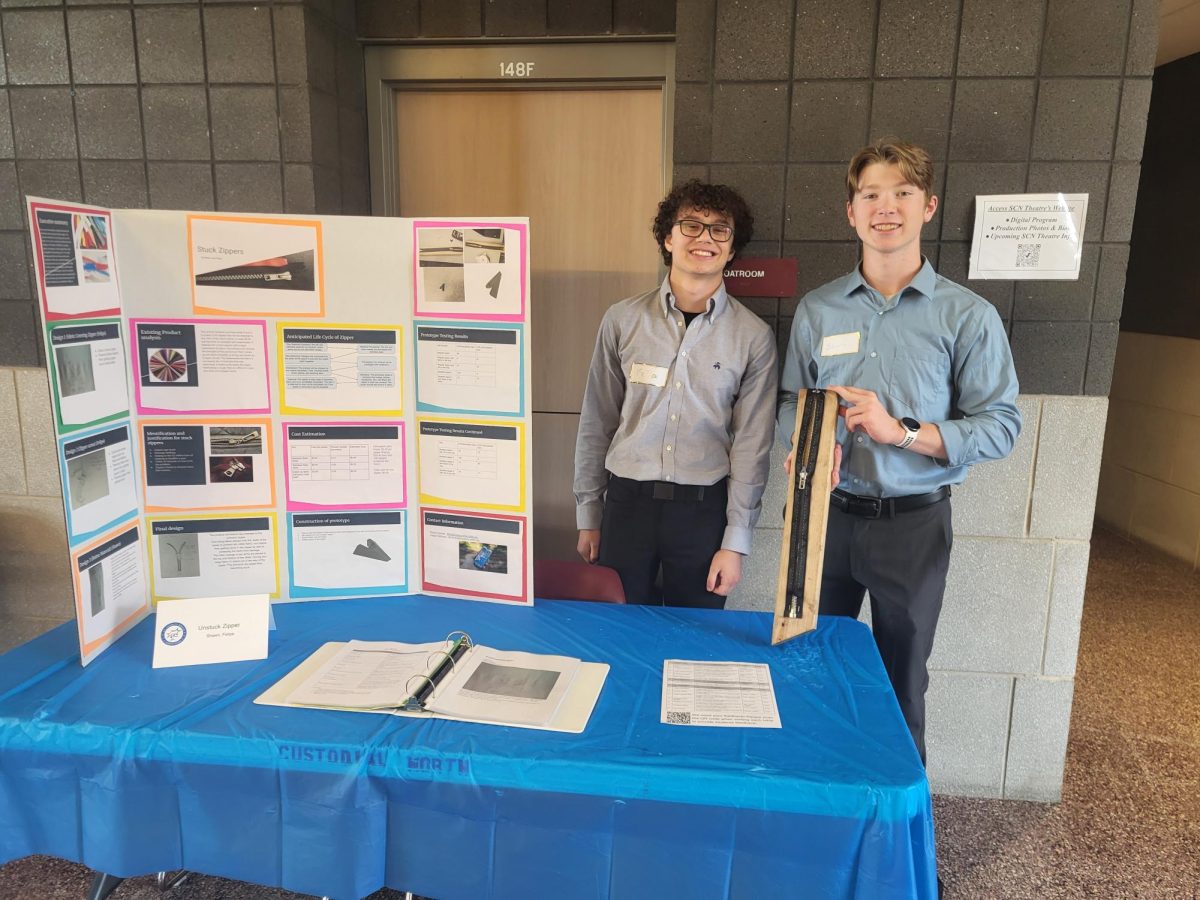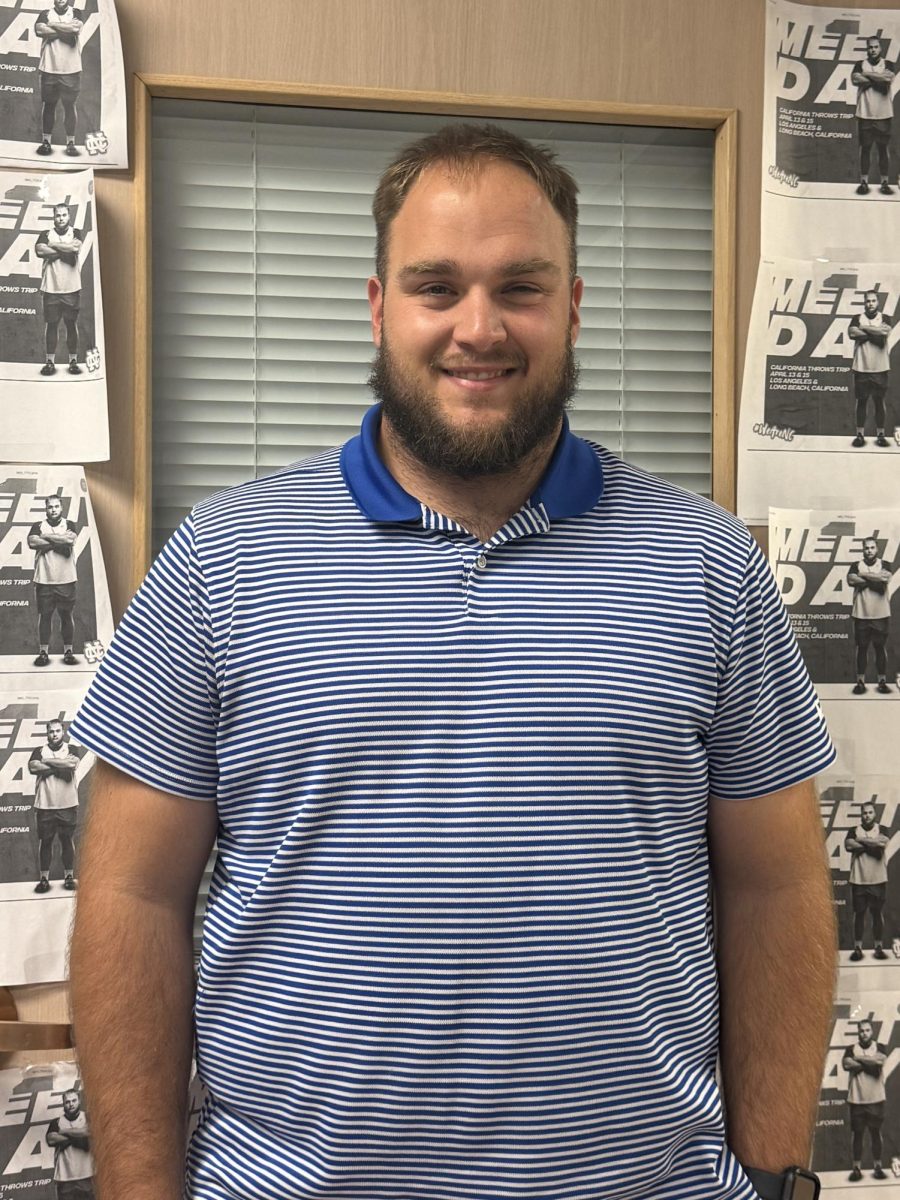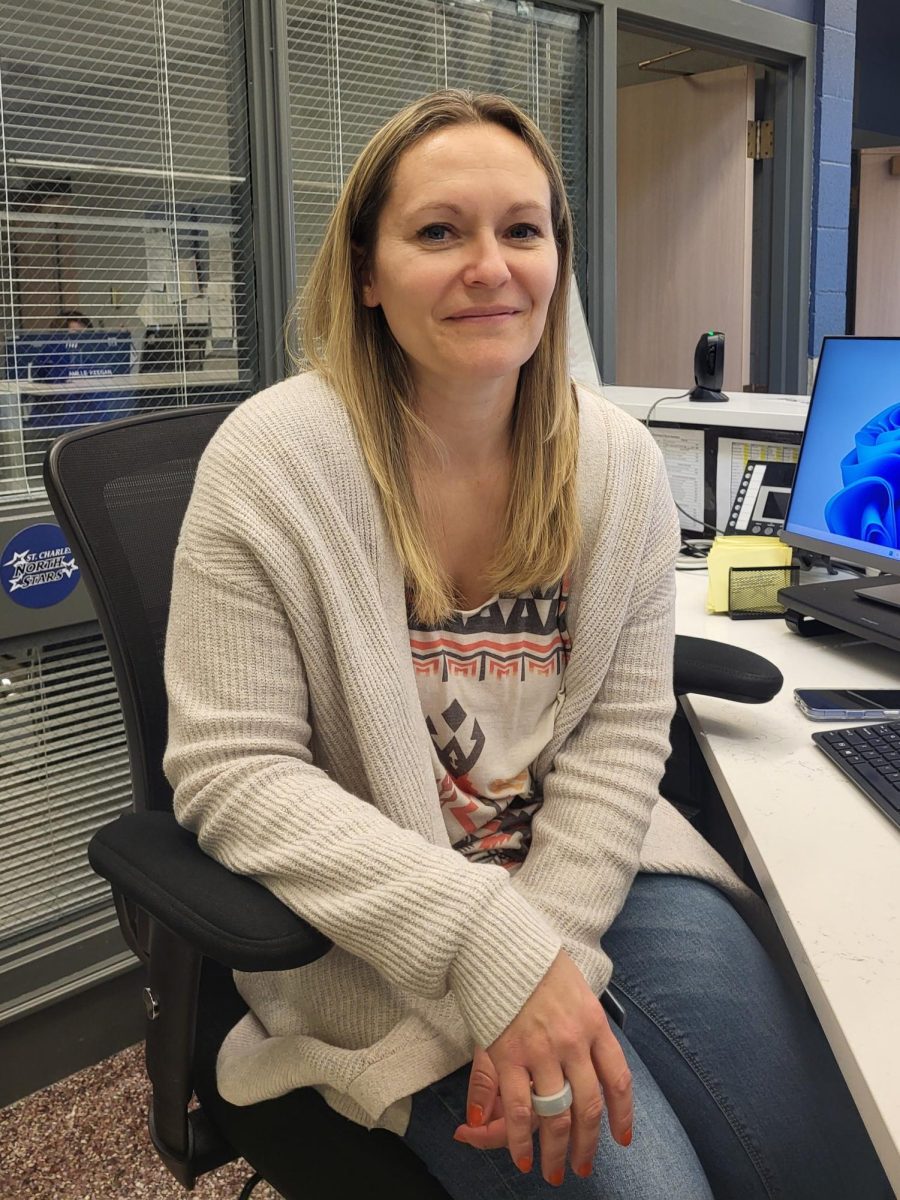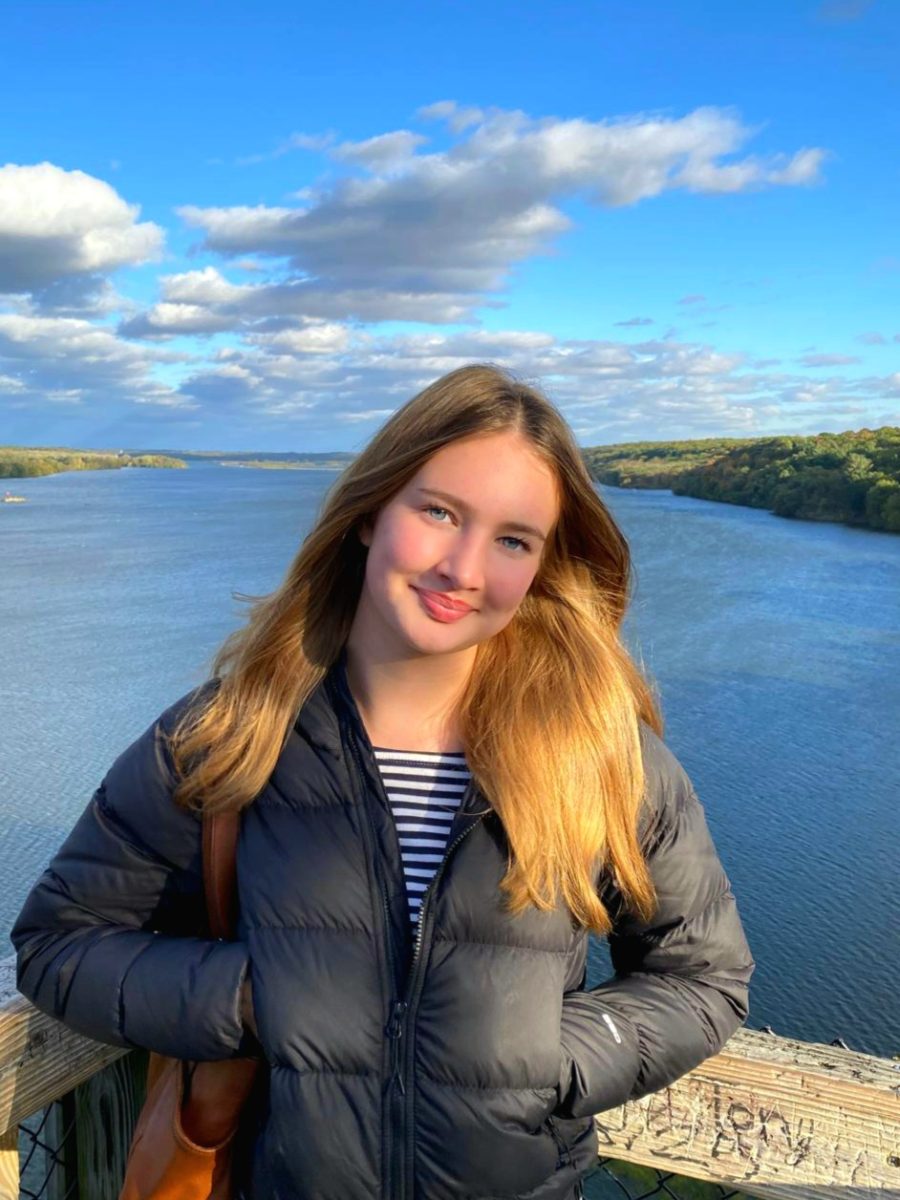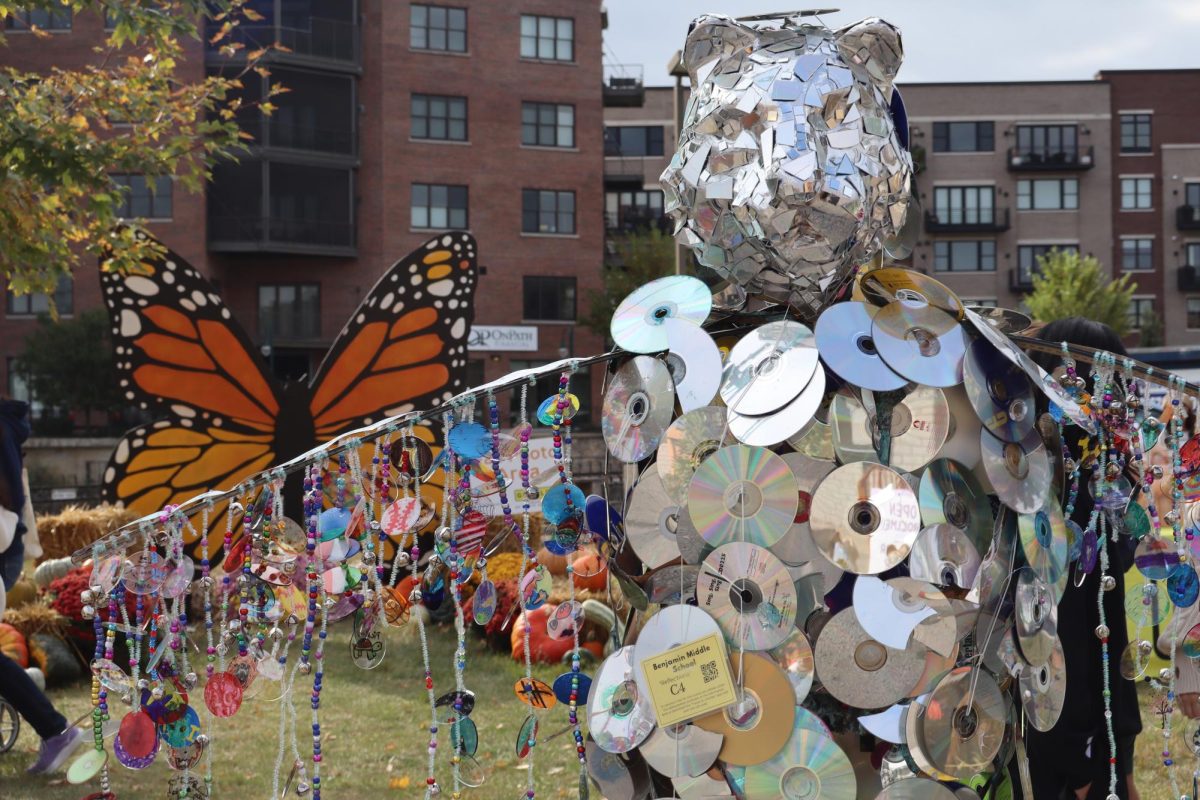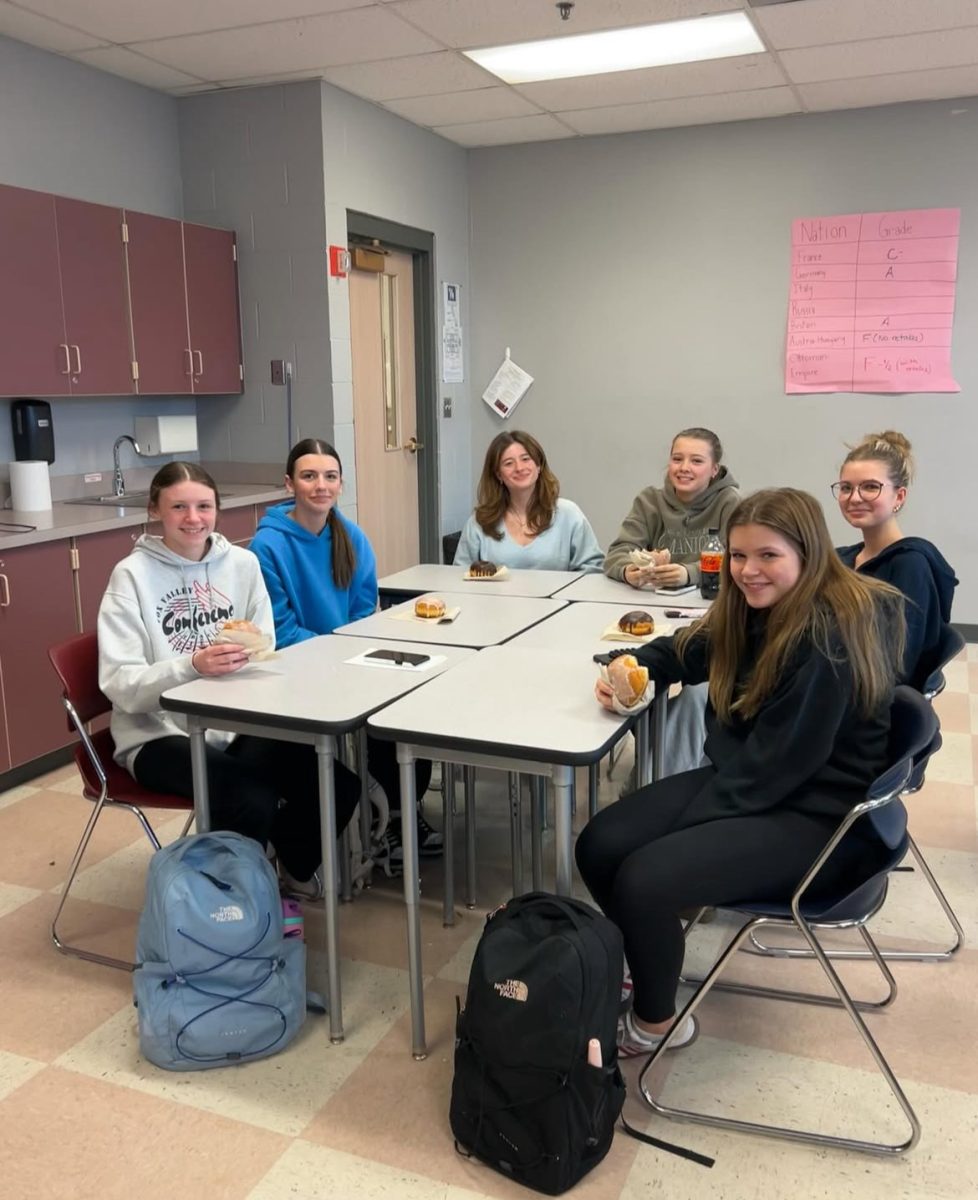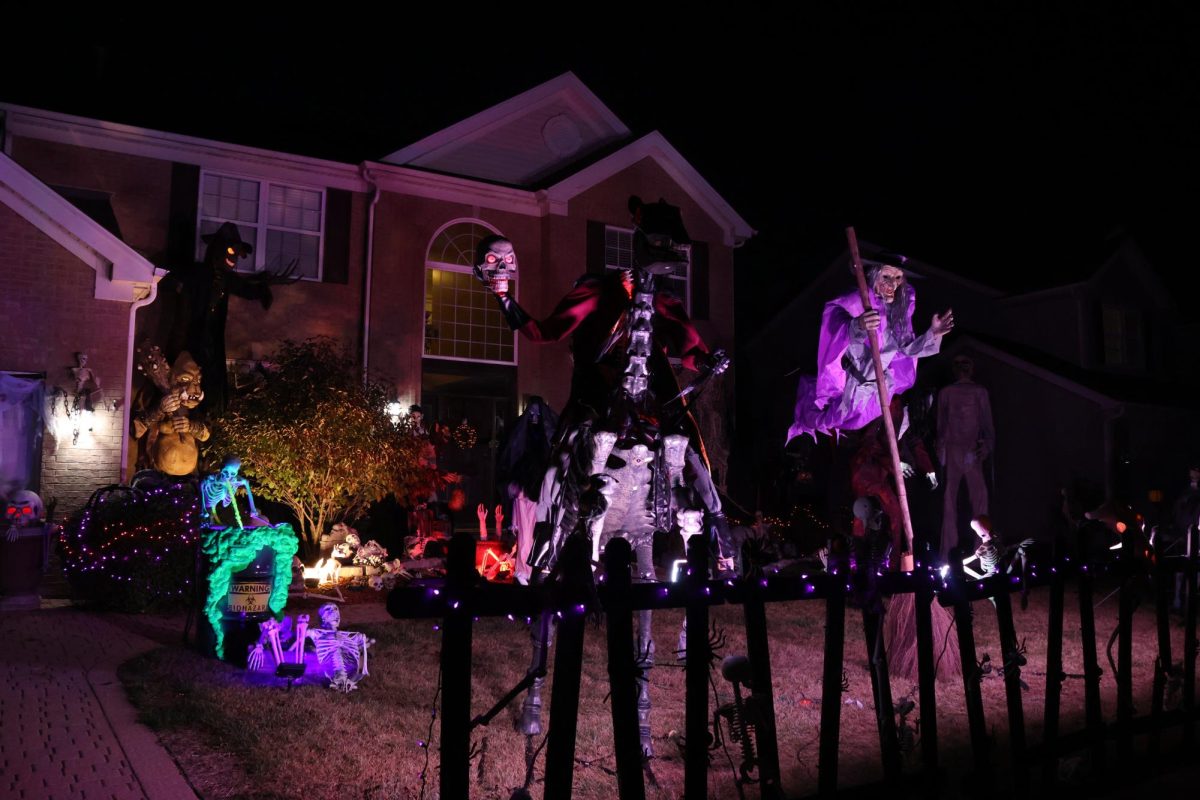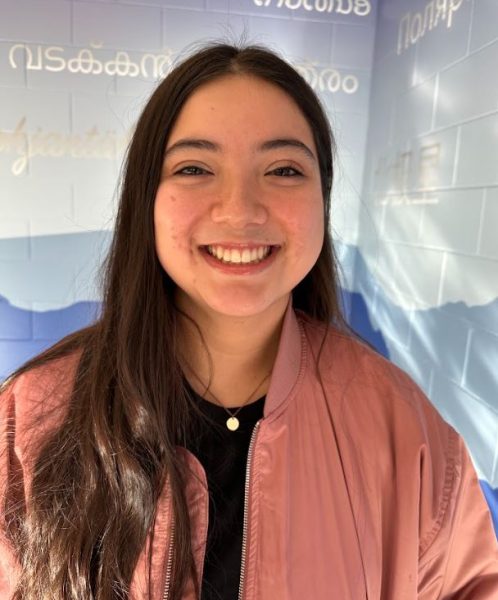On Thursday, May 1, students from North and East’s PLTW capstone class participated in their culminating showcase for their year-long projects in the North auditorium foyer. The students presented the products they developed over the course of the class.
“This capstone class is modeled after what would be considered a senior design course [in college], where there’s no real specific prompt other than find and solve a problem,” said Anthony Cerqua, engineering teacher. “Their goal is to develop a testable prototype to try to solve that problem by the end of the year. They put together reports, they put together their tri-folds, and then they present their findings and their prototypes to an audience, which is what we have at the showcase.”
The PLTW course takes students through each step of the engineering design process. Starting with the first step of defining the problem, students worked to identify a solvable problem to base their entire year’s project off of. Then came the next steps of researching ways to execute their solution.
“At the beginning of the year, we [spend all of first semester] researching our problem itself and then finding sources that support our problem, as well as finding patents that already exist for current designs, seeing where their faults have come in and what we could possibly learn from those as well as coming up with what materials we should use,” said senior and PLTW capstone student Shawn Ascher. “Our problem was zippers from backpacks, jackets and camping equipment. They all get stuck.”
After the problem is identified and a plan for a solution to their problem is developed, students are given a $100 budget to bring their vision to life. Ascher and his partner junior Felipe Feldhaus worked to solve the problem of zippers easily getting stuck.
“We came up with a solution that includes fabric over the teeth of the zipper as well as [something like] a plow. This will basically move anything that’s in the way of the zipper out of the way, causing it to slide freely,” said Ascher. “We basically wanted it to be a design that we can either put it onto current, existing zippers or zippers in the future that they can put our plow design on, and then you wouldn’t have to worry about your zipper getting stuck if you have it.”
The course offers students a lot of independence to work through the engineering design process, straying away from a typical day-to-day class time structure.
“What I really love about this is it’s actually the class where I stand up and talk to the students the least. We do some, we talk about technical writing, we talk about the engineering process, we talk about specifications and there’s some background skill stuff that we give them. But really the majority of it is, I kind of get out of their way and make sure that they have what they need to solve the problem,” said Cerqua.
Cerqua admires the capstone course because it utilizes the skills learnt in past science and math courses and gives students a unique opportunity to problem solve and create.
“All those things that you’ve learned through the other engineering classes, through all your math classes, from all your science classes in high school, middle school, even elementary school, all that stuff gets built up, and it’s really the best opportunity you’re going to have in high school to actually do something with it,” said Cerqua. “It’s cool because it’s student driven, and it’s the best opportunity you’re ever gonna have in high school, actually make something completely original.”


